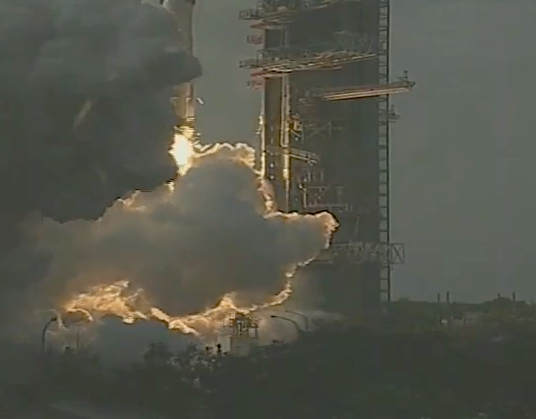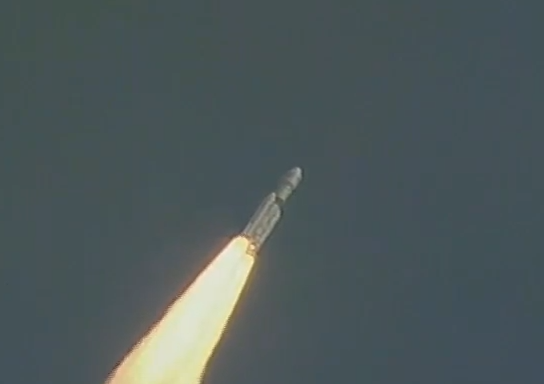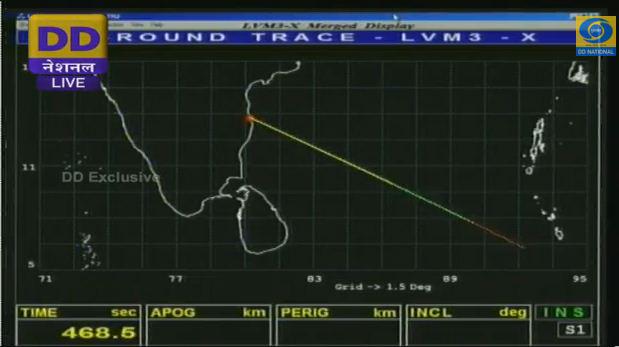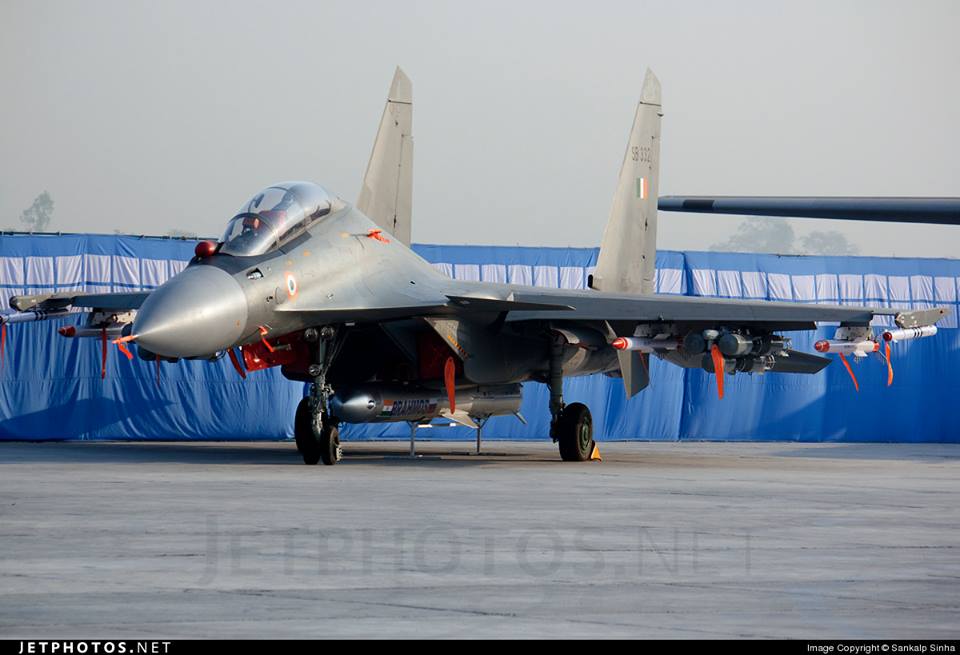
Fighter planes fall into two categories – the hunters and the hunted. The French are pitching their Rafale as the dogfight duke that is the crème de la crème of jet fighters. But the Russian side disagrees. Alexander Kadakin, Russia's ambassador in India, says Chinese-made Sukhoi-27s would be able to swat the Rafales like “mosquitoes on an August night.”
At this point it’s pointless to deliver the verdict on which aircraft is superior. The Rafale is a largely unknown commodity in aviation circles. Like most French fighters, it is most likely an unassuming, unspectacular but honest aircraft.
But what Kadakin left unsaid is ominous. First up, he said the hundreds of Su-27 Flankers supplied by Moscow to Beijing are much less advanced than the Flankers in India’s inventory. Now forget the Su-27 for a while and let’s talk about the two squadrons of the latest Su-35 Super Flanker that Russia has cleared for sale to China. This new iteration is a huge advancement over the already potent Su-27. If the aircraft's stupendous performance at the 2014 Paris Air Show is any indication then the Rafale is likely to fare even worse against the Su-35.
Costing dogfight
To be sure, the most significant aspect of the Rafale deal is the cost. Originally pegged at $10 billion, the size of the deal has climbed to a stratospheric $30 billion. So instead of bolstering the country’s air power, the Rafale is threatening to blow a gaping hole in India’s overstretched defence budget.
India may the third largest economy on the planet but in the backdrop of numerous projects requiring bucket loads of cash, New Delhi can’t afford to splurge on weapons, especially when alternatives are available for far less.
The IAF’s requirement of 126 aircraft can be quickly met – at a fraction of the cost of the Rafale – by inducting more numbers of the technologically superior Su-30s, which the IAF described as its “air dominance fighter,” and which is being produced at Hindustan Aeronautics Ltd (HAL).
Each Indian made Su-30 costs approximately $75 million per unit. So if the IAF goes for 126 of them, the total cost will come to under $10 billion, which coincidentally is the originally envisaged amount. Plus, the Sukhois will provide more bang for the buck. “These aircraft will be the high end of India’s air power, and can be expected to remain in the force past 2030, and are competitive with or superior to top-end European fighters and American F-15 variants,” says Defense Industry Daily.
Another option is to buy more of the – even more cheaper – MiG-29, which is the mainstay of India’s interceptor force, and which had shattered the morale of the Pakistan Air Force (PAF) during the 1999 Kargil War.
With the $20 billion or so saved, India can import leading edge aviation technology – from France, Russia, Germany or even the US to beef up its military aviation. With manufacturing declining in the US and Europe and thousands of defence sector jobs facing the axe, western engineers would be more than happy to work in India.
There is a precedent in this area. After 1991 when elite Soviet weapons engineers and scientists found their jobs gone, many of them found work at Chinese and South Korean companies – both military and civilian. Russian scientists and engineers ended up transforming the defence sector in both these Asian countries.
India too needs to tread the same path. Hiring unemployed or underemployed European defence sector workers would cut the development time frame of Indian defence projects. In fact, even Pakistan has a tenuous Russian connection. An administrator of Pakistan’s Space and Upper Atmosphere Research Commission from 1967 to 1970 was Polish aeronautical engineer air commodore Wladyslaw Turowicz. Born in Siberia, the Pole made significant contributions to Pakistan’s missile programme as an aeronautical engineer.
That brings up the third option. India’s homemade Tejas light combat aircraft (LCA) is being fielded in limited numbers, and further development can easily make it a world class fighter. India can then produce scores of LCAs costing around $40 million – for the IAF. For decades, China has adopted this policy of having hundreds of obsolete aircraft because “quantity has a quality all its own”.
Sending LCAs swarming into Pakistani air space would completely overwhelm that country’s defences. In effect, the Tejas fleet would kick the door in, allowing the Sukhois to pulverise targets with the supersonic BrahMos cruise missiles.
The LCA could even become the military equivalent of India’s $2000 TATA Nano car, for which there was a waiting list in Sri Lanka. Similarly, the LCA could be the ideal export aircraft to small countries with limited budgets. Aircraft such as the Su-30, MiG-29 and F-18 are too expensive and too big for the use of such nations. India could be the first to market a no-frills fighter.
Why Rafale?
When the MMRCA tender was floated over a decade ago, it seemed like a good idea. One, it was aimed at lowering India’s overwhelming dependence on Russia for advanced weapons.
Secondly, India wanted to acquire a medium aircraft that would fill the gap between the low-end LCA and the premium Sukhois.
The third reason was to shore up the IAF's depleting fighter fleet. The IAF’s sanctioned strength is 39.5 squadrons (an IAF combat squadron consists of 18 aircraft in service with another 3-4 in maintenance) but its current fleet is down to 34 squadrons. The air force says it requires 44 squadrons to meet a full-scale war with Pakistan, while also maintaining "a dissuasive posture" against China.
Earlier this year, the IAF told a Parliamentary standing committee on defence that a "collusive threat" from China and Pakistan would be difficult for it to handle. This was played up by the media, which failed to see the fine print: the IAF admitted (in the same statement) China may not pose “a collusive threat” if hostilities were to break out between India and Pakistan.
Indeed, why would the Chinese team up with a rapidly balkanizing Pakistan and attack a fellow BRICS member? It is not only counterintuitive but also a ridiculous idea.
As for the threat from Pakistan, it is really a joke. The arrival of the MiG-29 and the Sukhoi-30 in the 1990s has given the IAF a fearsome qualitative advantage over the PAF. This edge was demonstrated during the 1999 Kargil War. While a number of IAF aircraft took part in that campaign, it was the cover provided by the MiG-29 that spooked – and demoralised – the PAF pilots.
Says Strategy Page in a report dated May 20, 2005: “While PAF fighters did fly Combat Air Patrols (CAP) during the conflict, they stayed well within Pakistani air space. On occasions, IAF MiG-29s armed with the deadly R-77 BVR air-to-air missiles were able to lock on to PAF F-16s, forcing the latter to disengage.”
So scared were the Pakistani pilots of the Indian MiGs that the “PAF simply refused to play any part” in the war.
In the report “Airpower at 18,000 feet: IAF in the Kargil War” published by the Carnegie Endowment for International Peace in 2012, Benjamin Lambeth says the Pakistani F-16s “typically maintained a safe distance of 10 to 20 miles on the Pakistani side of the LoC”.
Qualitatively, the IAF is on an upward curve. In fact, in an interview to the media in 2012, former air force chief N.A.K. Browne gave the lie to the claim that the IAF was becoming weaker. According to Browne, the IAF is replacing older MiG-21s with Su-30s. He said once older aircraft are replaced with brand new Sukhois the IAF will have “far greater capability than even what we have today”.
If India and France sort out the numerous issues dogging the MMRCA deal and a contract is signed this year, then the first 18 Rafales will arrive from France in 2016. If all goes smoothly, the rest of the 102 aircraft could start rolling off HAL’s assembly lines by 2018.
But here’s the rub: around 2020 Sukhoi’s stealth fighter, the PAK-FA, in which India is a junior partner, will be ready to join the IAF. Why India is committing itself to a stopgap aircraft is mysterious.
![[IMG]](https://blogger.googleusercontent.com/img/b/R29vZ2xl/AVvXsEhn8eyC73czEMi9WaJJepULTYD9XCDlO2nhESG_cM9onCoG0-XfBGCTRAiM6K-m85IH5AP0YjWp8Pj11LCurhW5JRrYRpp3E_g3PqfmmXGrPzHsq5HoLm8JYaZo3Wy6uvXwLTknod9IAyA/s400/s200test.jpg)
![[IMG]](http://www.thehindu.com/multimedia/dynamic/00177/AVN_RAAKKET_177754f.jpg)
![[IMG]](http://www.thehindu.com/multimedia/dynamic/02219/TH25_GSLV_MARK_III_2219491f.jpg)
![[IMG]](http://gallery.military.ir/albums/userpics/10058/Rock.jpg)




![[IMG]](https://scontent-a-sin.xx.fbcdn.net/hphotos-xfa1/v/t1.0-9/10857947_1580703695486320_4922674909743751067_n.jpg?oh=59398817f8e27137cb065f11021c09ea&oe=5505B9BE)
![[IMG]](http://www.isro.org/gslv-mkiii-x/Imagegallery/launchvehicle_images/gslv-mkiii-x-5.jpg)
![[IMG]](http://www.isro.org/gslv-mkiii-x/Imagegallery/launchvehicle_images/gslv-mkiii-x-4.jpg)
![[IMG]](http://www.isro.org/gslv-mkiii-x/Imagegallery/launchvehicle_images/gslv-mkiii-x-3.jpg)
![[IMG]](http://www.isro.org/gslv-mkiii-x/Imagegallery/launchvehicle_images/gslv-mkiii-x-2.jpg)
![[IMG]](http://www.thehindu.com/multimedia/dynamic/01815/29TH_GSLV-MK_III_1815569f.jpg)
![[IMG]](http://www.isro.org/gslv-mkiii-x/Imagegallery/launchvehicle_images/gslv-mkiii-x-1.jpg)
![[IMG]](http://www.isro.org/gslv-mkiii-x/Imagegallery/launchvehicle_images/gslv-mkiii-x-7.jpg)









![[IMG]](http://economictimes.indiatimes.com/thumb/msid-20308761,width-640,resizemode-4/us-2-the-amphibious-aircraft-india-may-buy-from-japan.jpg)
![[IMG]](http://www.thehindu.com/multimedia/dynamic/01833/09TH-VIKRANT-OLD_1833622f.jpg)